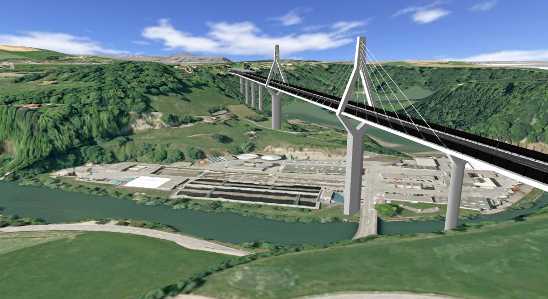Autodesk is stepping up its efforts against Bentley Systems, long recognized as the leader in infrastructure. New capabilities in Infrastructure Modeler seek to streamline the use of 3D, mobile, and cloud technologies in the workflow.
Despite recent advances, civil engineering and other large scale infrastructure work has continued to rely on 2D for much of the core design work. One reason is the unique linear nature of building roads, power line networks, train tracks, and the like. Sometimes factors like the curvature of the earth make thinking and working in 3D a bit of a stretch.

Autodesk and Bentley compete head-to-head in civil engineering; products from both companies are the norm in most public organizations. Private consulting firms are more likely to standardize on AutoCAD. To extend its reach with existing customers and to possible gain on Bentley, Autodesk recently announced Project Mercury, which combines desktop, cloud, and mobile technologies for 3D on infrastructure construction projects.
At Autodesk University recently the company was previewing a cloud-based road optimization service for Infrastructure Modeler, the first in a series of cloud-based services Autodesk plans to deliver in 2013. The new road optimization service is intended to help civil engineers and designers create more cost-effective and efficient road and highway designs by optimizing and automating engineering calculations and designs.
As part of its newfound zeal for civil engineering, Autodesk also announced that the New Mexico (USA) Department of Transportation (NMDOT) is extending its use of Autodesk software. While not a direct repudiation of Bentley, the announcement made it clear NMDOT likes the new suites approach to buying software, which for them primarily means Infrastructure Design Suite 2013. NMDOT plans to start training on Autodesk 3D software in early 2013, with application on projects expected to begin mid-2013. Recently it used Infrastructure Modeler to generate 3D visualizations for the Cambray Bridge replacement and I-10 roadway rehabilitation projects.
Our take
For years Autodesk’s civil engineering offerings seemed to languish as a distant second among state departments of transportation in the US, even though AutoCAD was in common use. The new suites strategy seems to be paying off in this market for Autodesk. Bentley also offers 3D visualization tools, and remains a formidable presence in the market. Its new Bentley Connect strategy, a plan to unite various cloud and internal server deployments, will play well in many DOTs, and will have to be evaluated against the capabilities promised by Project Mercury. As in most other engineering markets, much of the decision process comes down to buying point tools or making a strategic enterprise deployment.





